Huge thanks to @spoonmann8 for cluing me into Netflix’s Night On Earth series. I had been procrastinating watching it. While I occasionally enjoy a nature show once in a while, like the BBC Planet Earth series, nothing about the Night On Earth series jumped out at me until @spoonmann8 told me to watch it because they use color night vision and thermal imaging in the show.
Color Night Vision Is A Reality Thanks To Technology

I shot this with my Sony A7S at night. You can see the stars in the background.
If you recall I had an article about analog color night vision using a ColorTac on a PVS-14. While that did not work that well, digital night vision, on the other hand, has surpassed analog color night vision. Here is an early article I posted before the SiOnyx Aurora was out. Then you have the SiOnyx Aurora, click here to refresh yourself.
Well in the Netflix series, Night On Earth, they are using ultra low light cameras. Digital cameras that are extremely sensitive to low light. One of the key components of low light photography was the use of a full moon. Under a full moon, even the SiOnyx Aurora looks amazing. However, on night mode you are getting both infrared spectrum as well as a normal spectrum of light. So your image will look purple due to the IR wavelength. In Night On Earth, they only use a full spectrum camera for some of their shots.
Night On Earth: Shot In The Dark
Night On Earth is a 6 episode special series on Netflix. However, there is a stand-alone documentary called Night On Earth: Shot In The Dark that documented how the series was filmed. For you tech geeks and night vision fanatics, this was more interesting than the 6 episode series.
In the series, they filmed a group of cheetahs at night. It was believed that cheetahs are not active at night but this footage proves that is not the case. I don’t know what camera they used specifically but it was mounted on a gimble which was mounted on a sort of steadicam that is attached to their chase vehicle. The cameraman sits in the front passenger seat and controls the camera from inside the vehicle.

Vehicle-mounted color night vision camera
The images they captured are stunning.

Screenshot from Netflix Night On Earth
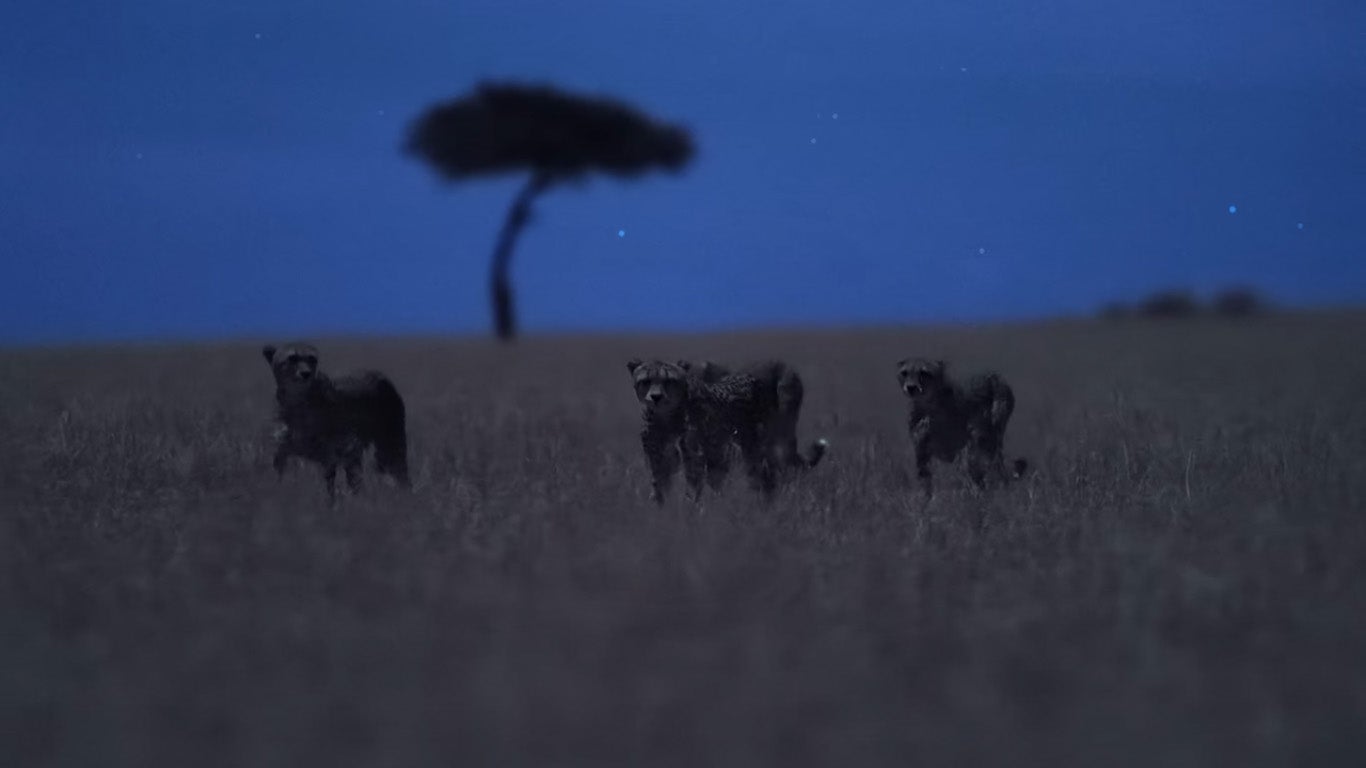
Screenshot from Netflix Night On Earth
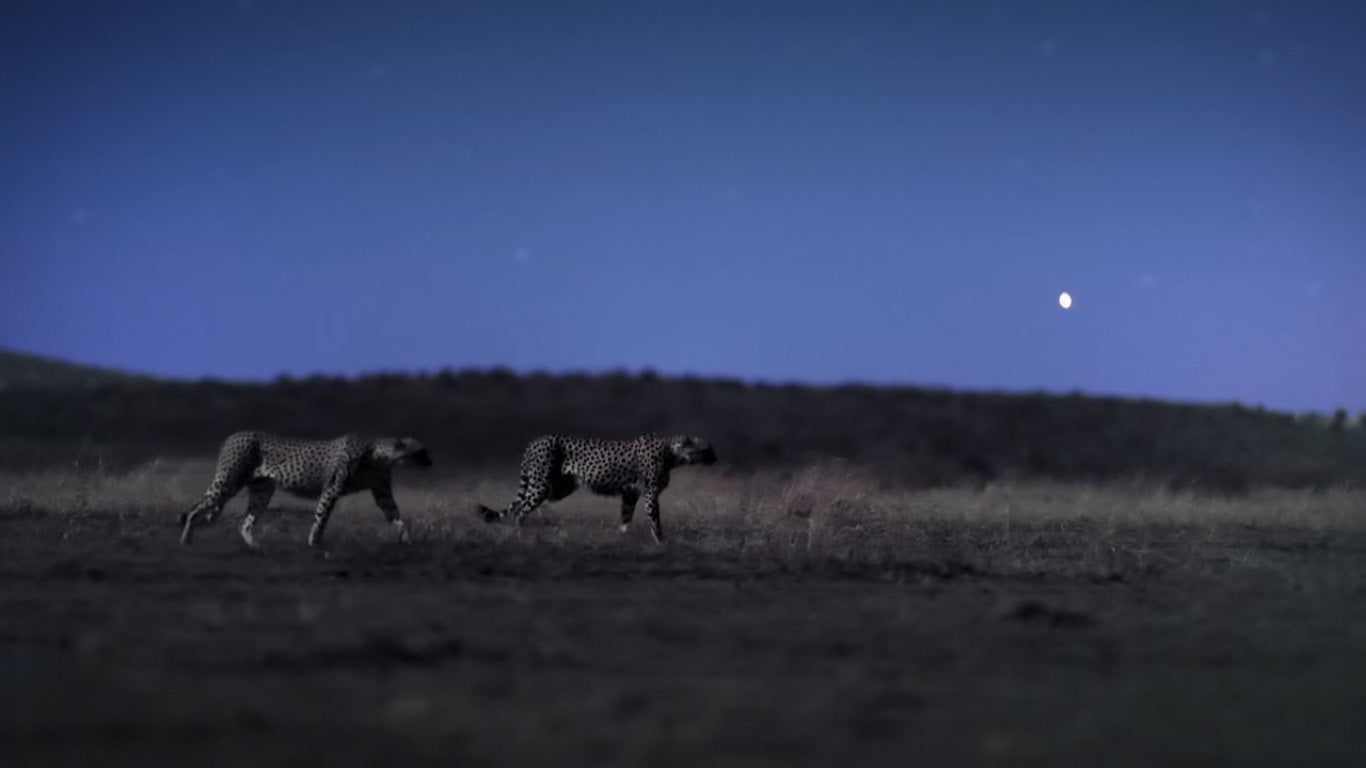
Screenshot from Netflix Night On Earth
The footage they captured really reminded me of my Sony A7S camera.

This photo was taken with a Sony A7S at 11pm with a full moon shining down.
One thing I saw in the Shot In The Dark documentary was the driver for the Cheetah chase vehicle was using binocular dual tube night vision to drive the vehicle.
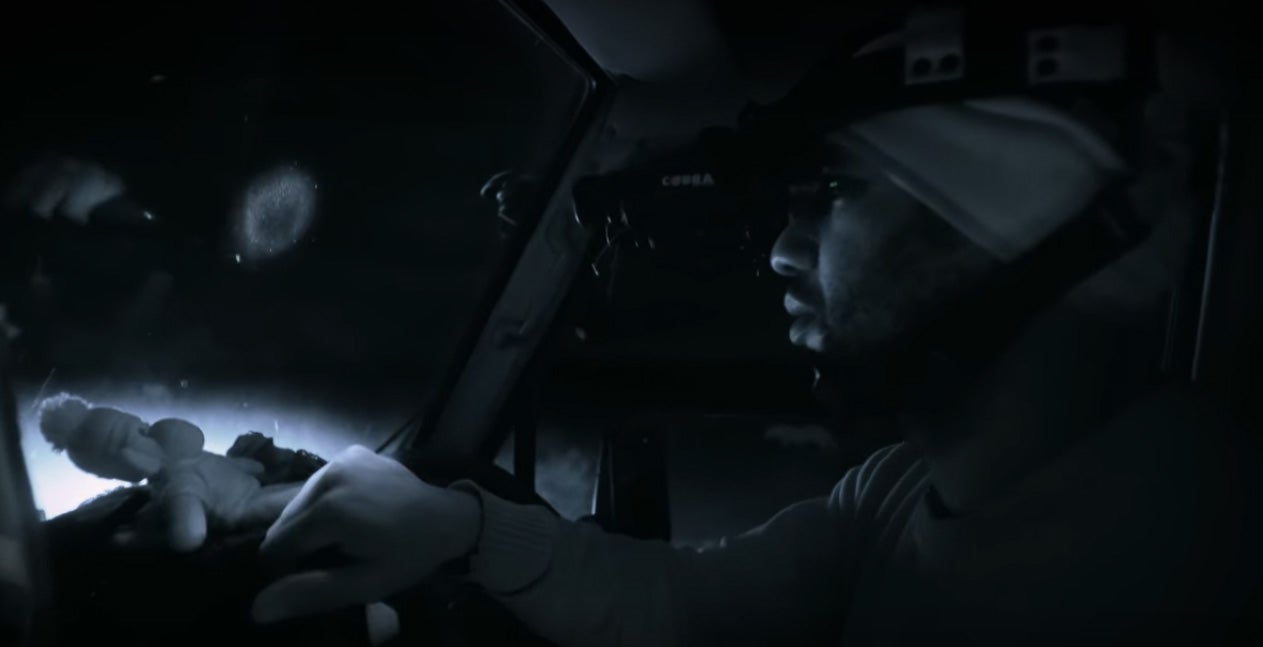
Screenshot from Netflix

Screenshot from Netflix

Screenshot from Netflix
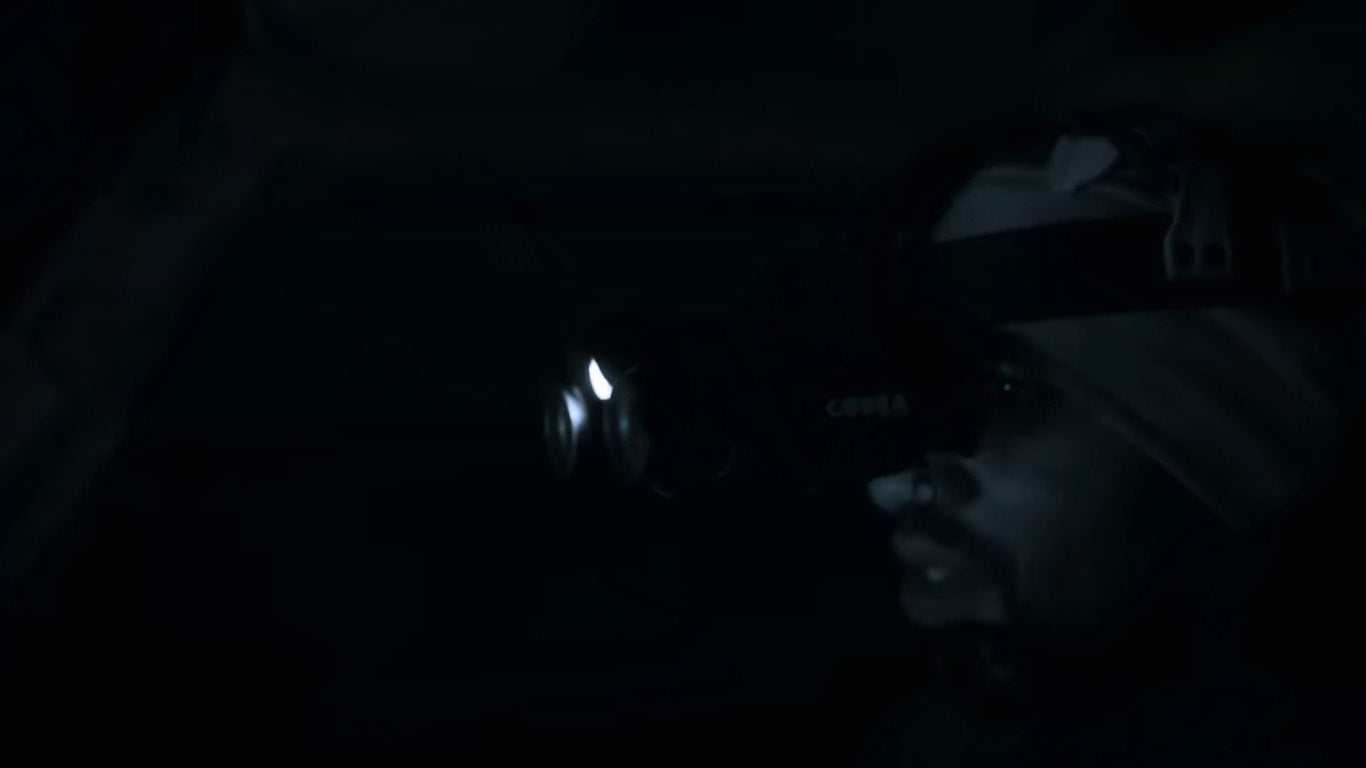
Screenshot from Netflix
I googled “Cobra night vision goggles” and Thomas Jacks website has something that looks similar. These are called Cobra Aurora NVG. Not to be confused with the SiOnyx Aurora night vision camera. According to Thomas Jacks these have Russian Gen 2+ image intensifier tubes.
Notice anything odd about the Cobra Aurora NVGs the driver is using? He has the IR illuminator on while inside the vehicle as he is driving. Now, this could be for a number of reasons but none of them are for driving the chase vehicle. The IR illuminators that are built onboard NVGs are for immediate task use and for close range use. In the first screenshot, you can see how tight the beam is. While this may help throw the light further it is at best like the PVS-15 IR illuminator with the refocus lens and is only good for like 10 yards. This wouldn’t help him drive the car. Notice that the light hits the windshield? One reason he might have the IR illuminator on is simply for the camera that took the video of him driving with the Cobra NVGs. By having the IR illuminator on during that short scene, the light would splash back off the windshield and help illuminate the driver a bit, making it easier for the camera to film him.
Flamingos At Night
Netflix used a similar ultra-sensitive color night vision camera to film the flamingos at night.

Cinematographer using a sensitive low light color night vision camera to film flamingos. They probably used a similar camera to film this shot of the cinematographer.
Here are some screenshots from Night On Earth.
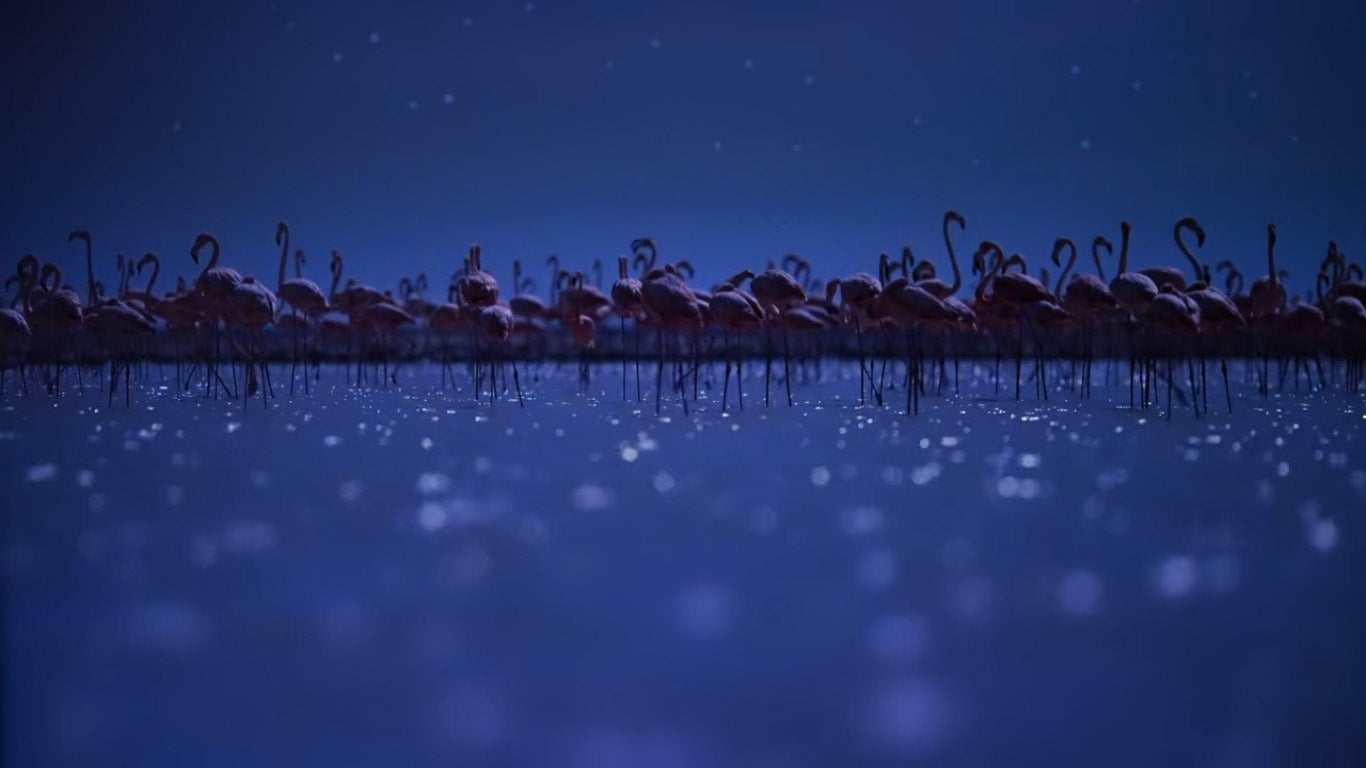
Screenshot from Netflix Night On Earth

Screenshot from Netflix Night On Earth

Screenshot from Netflix Night On Earth

Screenshot from Netflix Night On Earth
Night On Earth Thermal Camera
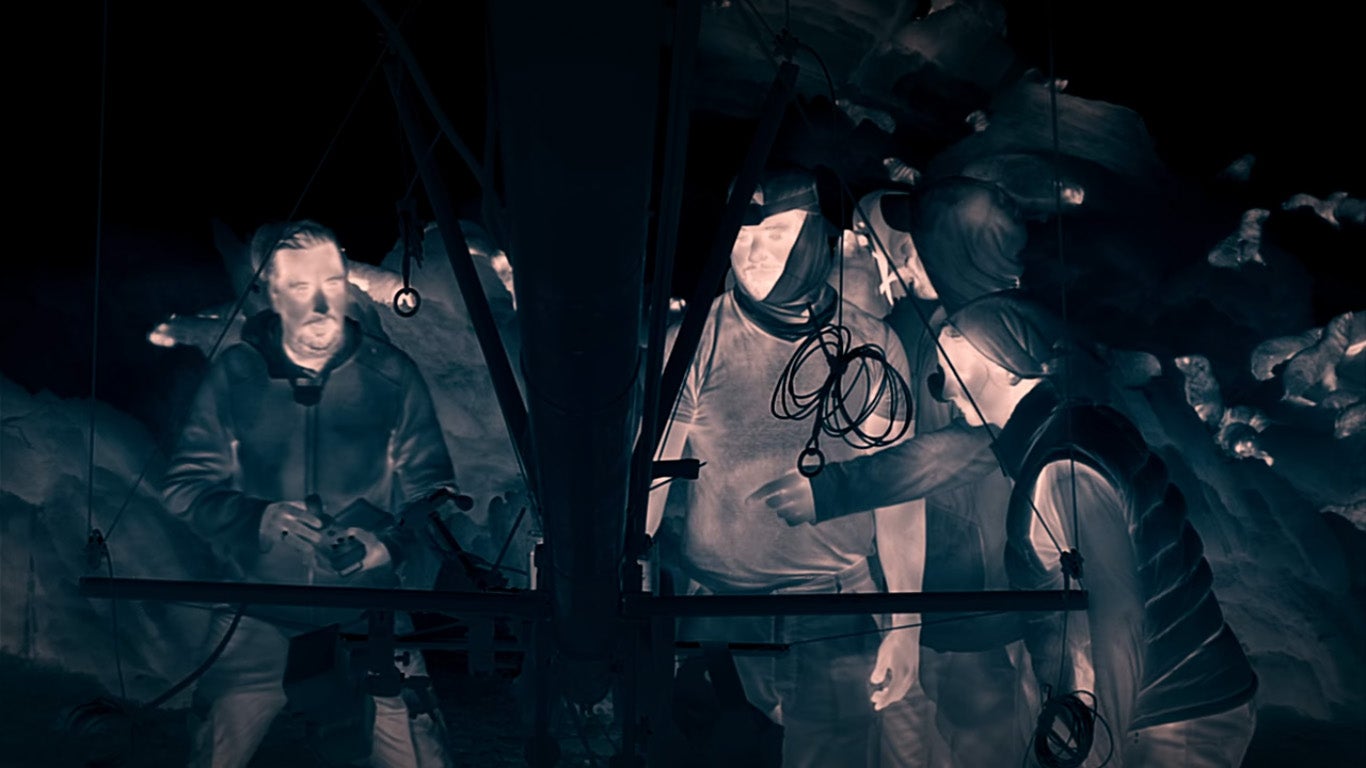
Screenshot of Netflix Crew
I was extremely intrigued by the thermal footage Netflix captured in their Night On Earth series. In the Shot In The Dark documentary, we got to see the thermal camera that Netfix used to film some of their shots.
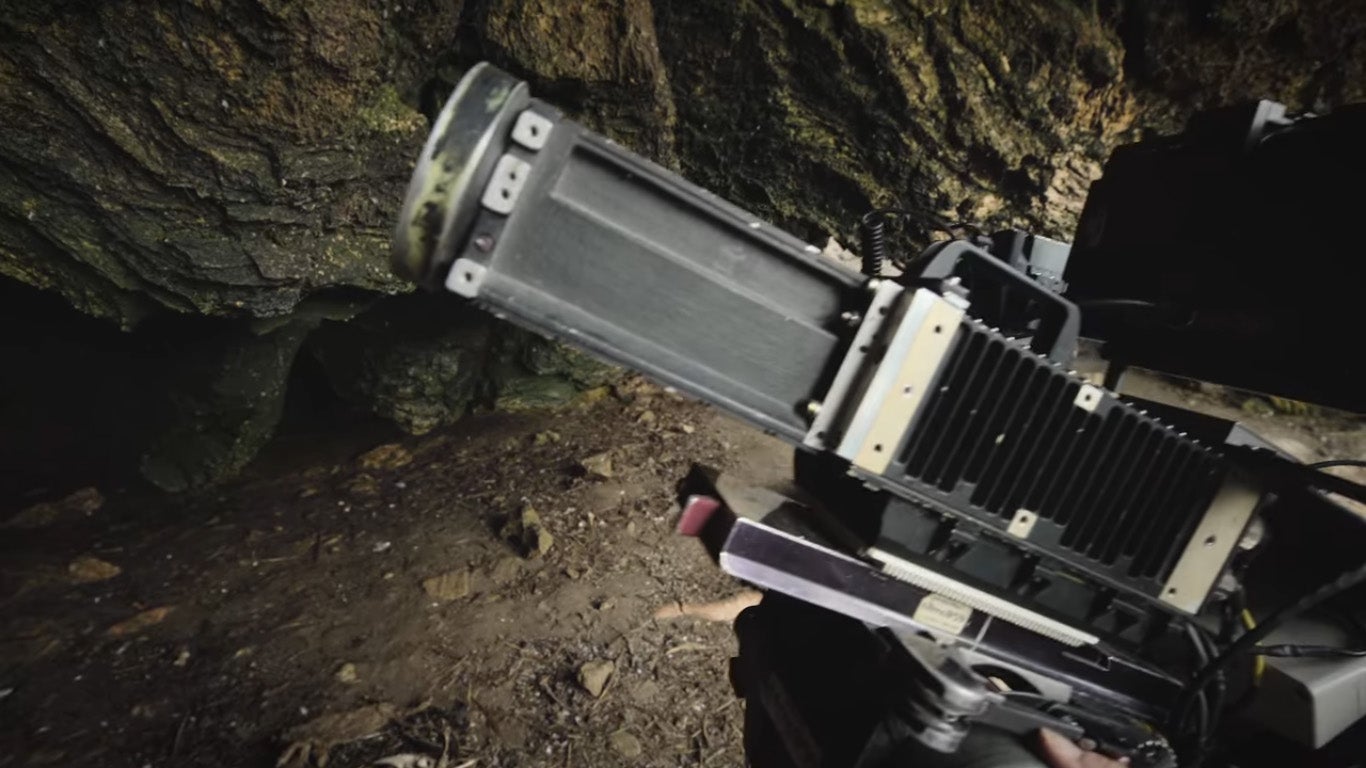
Thermal imaging camera used on Netflix Night On Earth
Here are some screenshots of the vampire bats before they filmed the seals.

Screenshot from Netflix

Screenshot from Netflix Night On Earth

Screenshot from Netflix Night On Earth

Screenshot from Netflix Night On Earth

Screenshot from Netflix Night On Earth

Screenshot from Netflix
When Netflix filmed the jungle at night it looks like they might have used the same thermal imaging camera.

Screenshot from Netflix
What caught my attention is this cinematographer’s comment about the thermal imaging camera she was using.

Screenshot from Netflix
From the documentary audio, it seems that maybe the thermal imaging camera may be a liquid-cooled thermal camera. This makes sense since the images they captured were gorgeous. Cooled thermal devices are typically more sensitive than uncooled systems.
FLIR has a good series of videos explaining the differences.
The sensitivity of the thermal imaging cameras used in Night On Earth is off the charts. Take a look at the screenshot below. From the few thermal units I have tried and reviewed, I have never seen such a clear image like this. What amazed me the most was how clear the clouds show up in this shot. When I reviewed the N-Vision Halo, it had the best resolution of any thermal device I have used previously. However when you start looking up to the sky, the closer you get to the sky the temperature differential is too great and you lose details on the ground to look at the sky. The ground would go black or white, depending on if you are white hot or black hot. Here this is not the case with the thermal imaging camera used by Netflix. You can see great detail in the ground all the way up to the sky and even see the clouds. That is amazing thermal technology.

Screenshot from Netflix
Here are some of the shots they captured up in the trees with the thermal imaging camera.
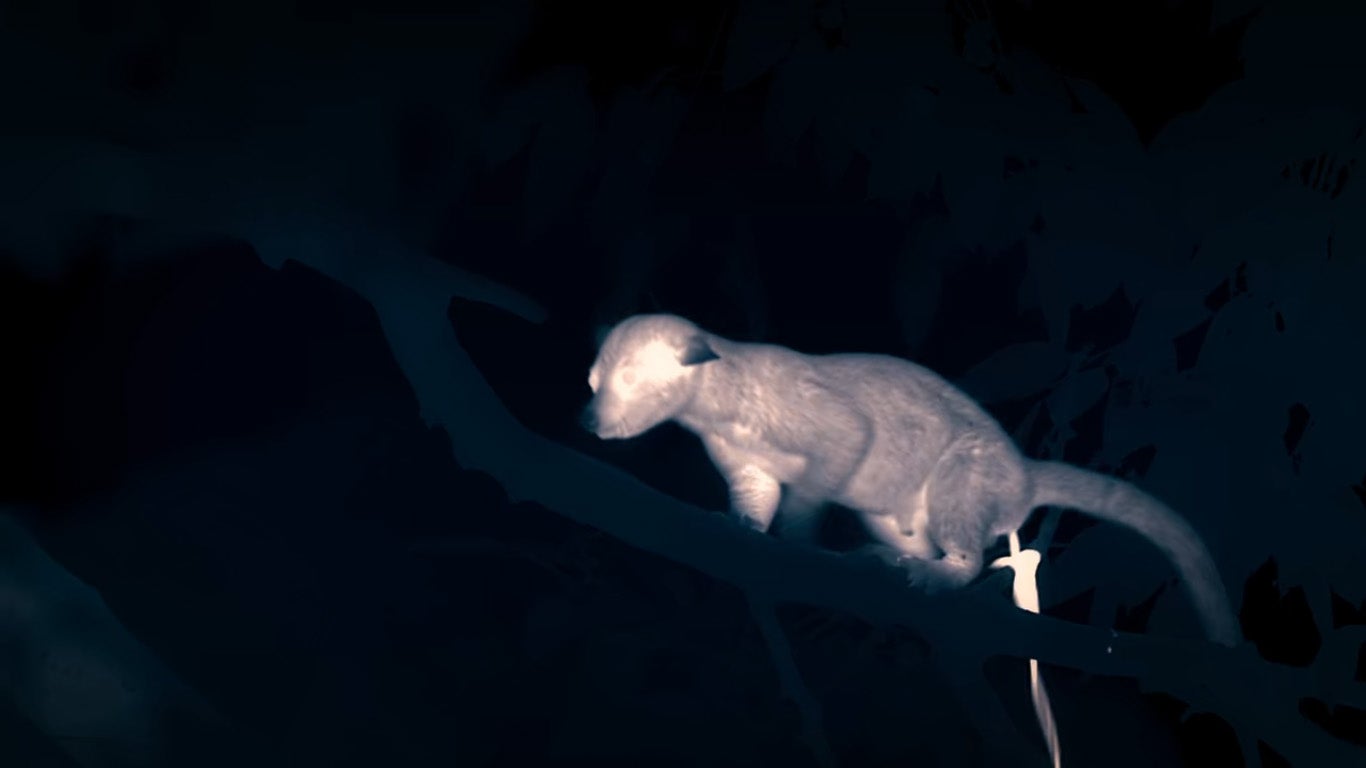
Screenshot from Netflix

Screenshot from Netflix. Flying squirrel gliding between the trees.

Screenshot from Netflix
They used the same thermal imaging camera to film the Pumas in Chile.

You can see the same thermal camera in this screenshot.

Screenshot from Netflix
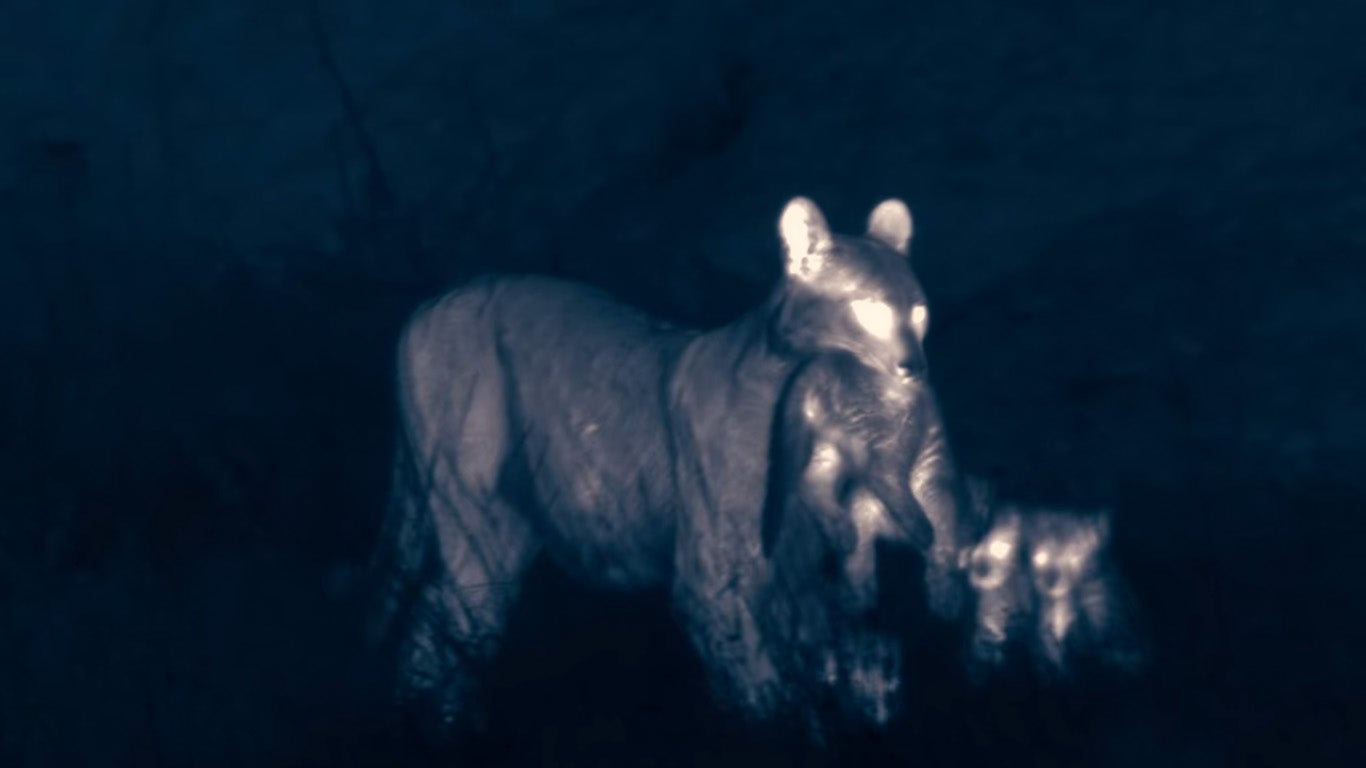
Screenshot from Netflix

Screenshot from Netflix
Speaking of FLIR and thermal, Netflix mounted a thermal camera “designed for a science lab” onto a drone.

FLIR thermal camera screenshot from Netflix
Take a look at the images it recorded.
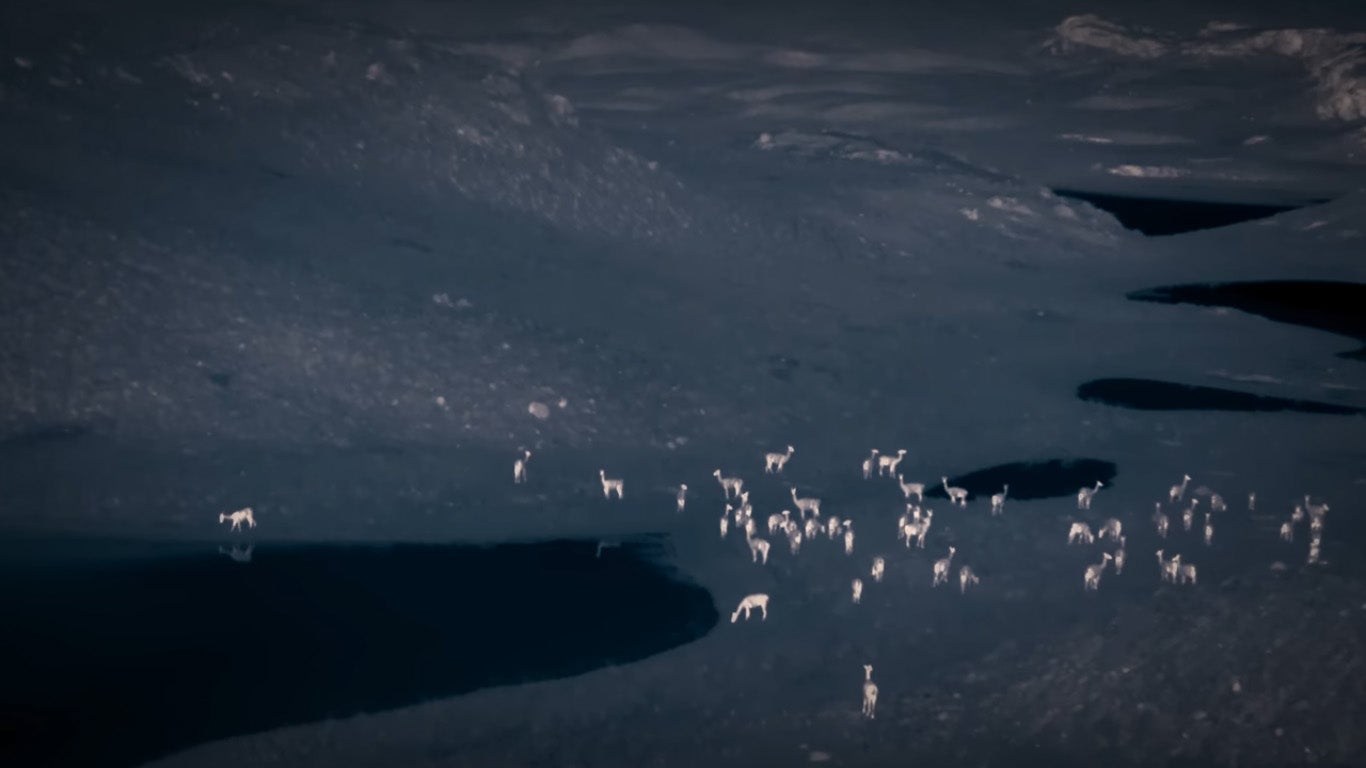
Screenshot from Netflix

Screenshot from Netflix
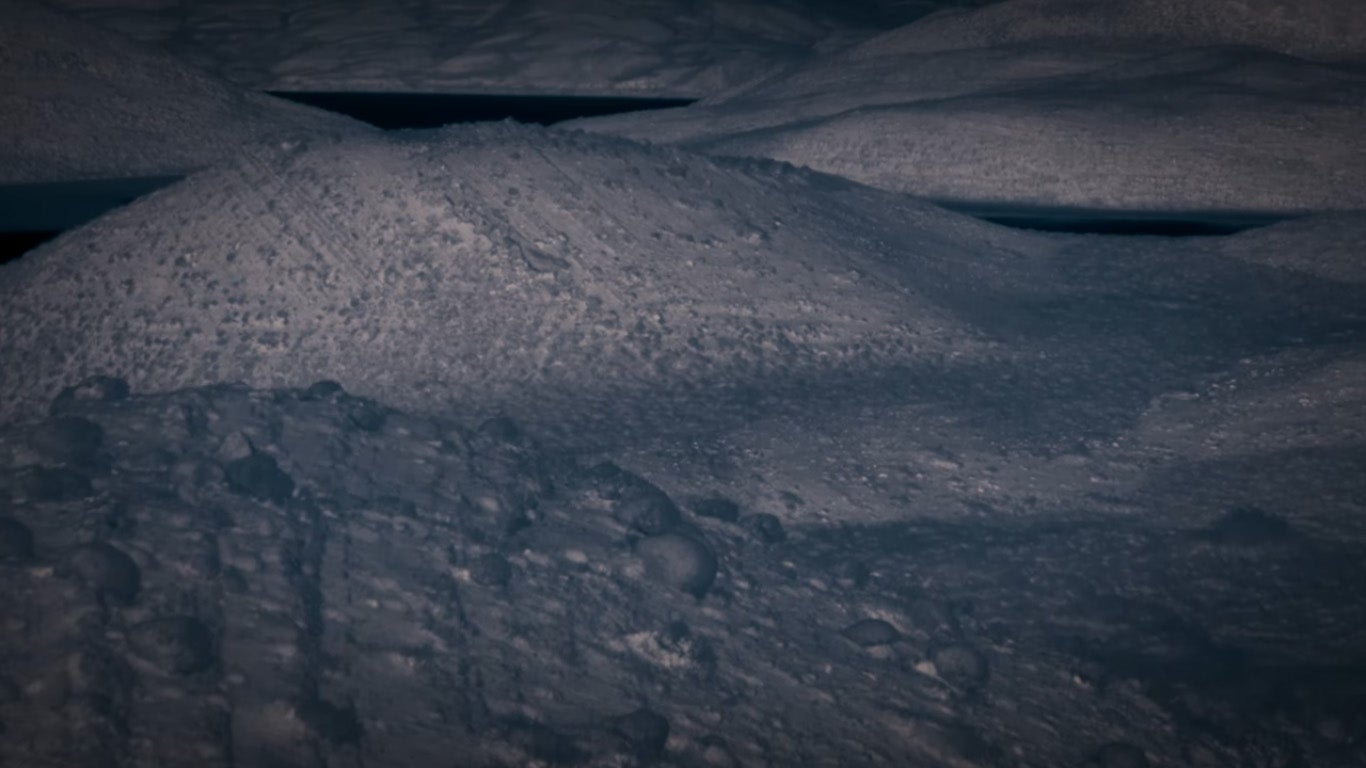
Screenshot from Netflix
I reached out to my FLIR contact and she told me they are using a FLIR T1K.
Infrared Night Photography
Aside from sensitive low light cameras and thermal imaging cameras, Netflix used some old fashioned infrared photography to film some of their sequences. The crew that captured the Owl Monkeys used a “full spectrum camera”. It is a digital camera with the infrared filter, aka Hot Mirror, removed so the sensor can see infrared light. Throughout the Shot In The Dark documentary, they mention the light of the full moon when talking about their low light cameras. Well, those cameras cannot really see in the dark. Just like analog night vision you need some light for the cameras to see. When you are in a dense jungle with a canopy of foliage above you not that much light penetrates so they compensate by using infrared lights to illuminate the jungle.
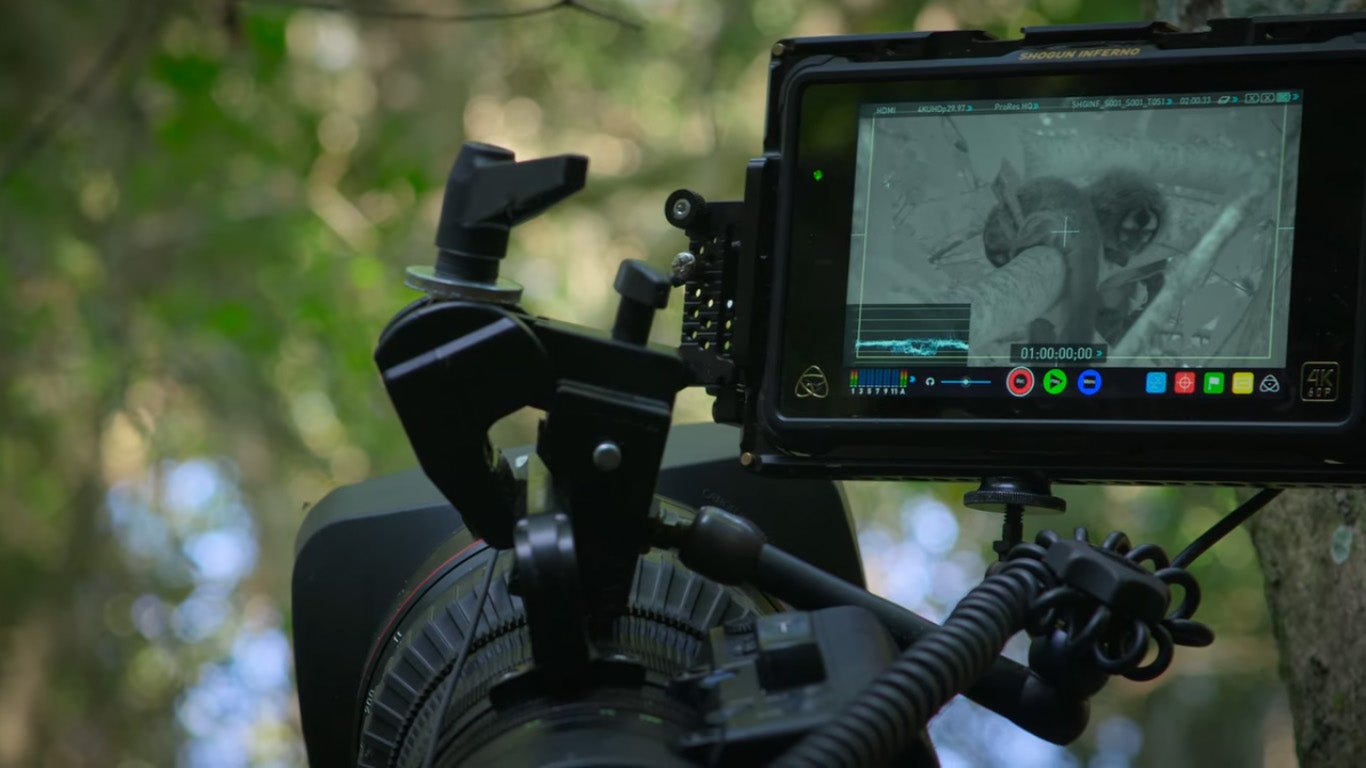
Screenshot from Netflix
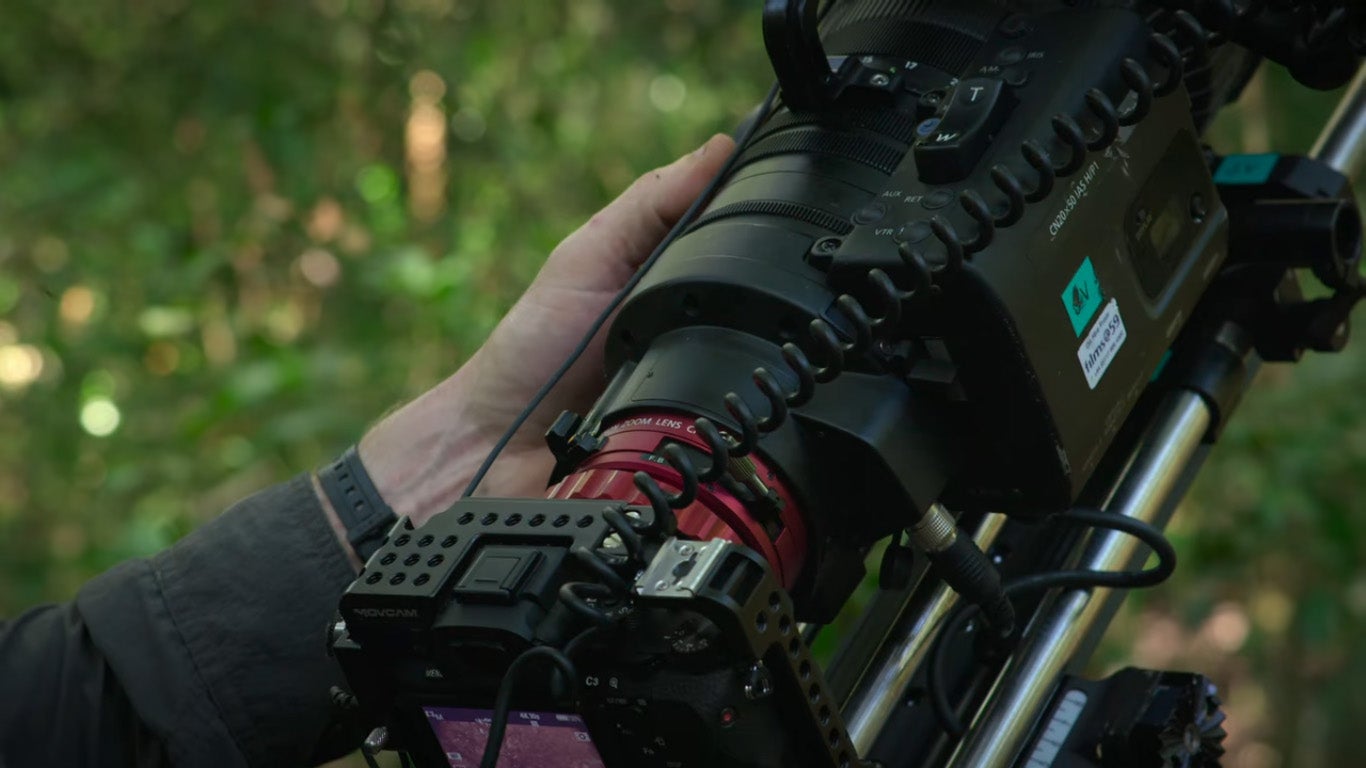
Screenshot from Netflix

Screenshot from Netflix

Screenshot from Netflix
Here they turned on the IR lights but the camera that took this picture cannot see it since it still has the infrared blocking filter on the sensor.

Screenshot from Netflix
Here is a screenshot of what the full spectrum camera captured. An Owl Monkey waking up.
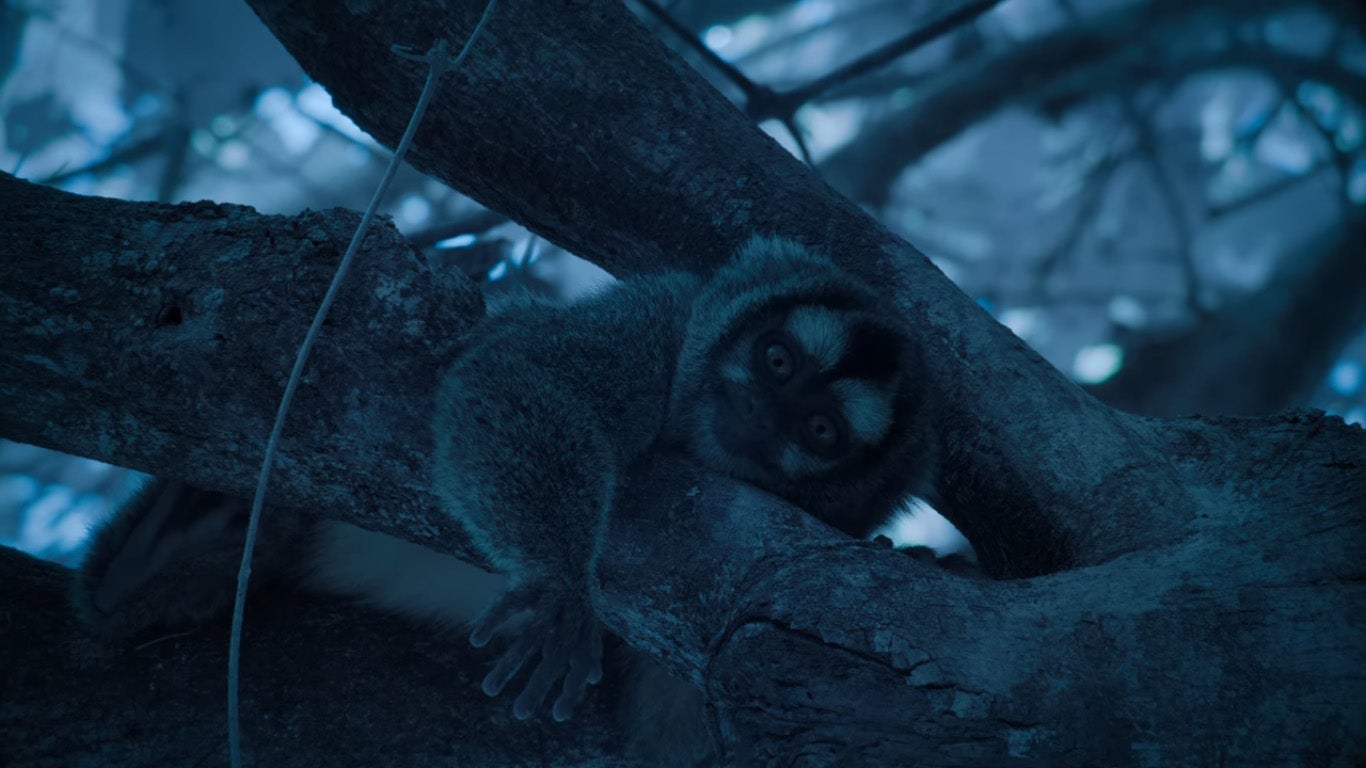
Screenshot from Netflix
Final Thoughts About Night On Earth
I watched Shot In The Dark before watching the Night On Earth series and I am glad I did. I found this stand-alone documentary way more interesting because you get a better idea of how they filmed the series and what technology they used. The series just has gorgeous cinematography and while it is pretty to look at, I am more interested in the technology.
One thing I was a little disappointed in was the lack of actual night vision. I am talking about analog image intensification. We did get a glimpse of the driver for the cheetah chase vehicle use some head-mounted night vision goggles but those are Russian Gen2+ at best. Then I realized why they did not use night vision for this series. It is a two-part problem. The first problem is ITAR. Any of the really good image intensifying tubes are restricted for exportation. You can’t even temporarily take them out of the country without the Department of Defense’s expressed approval. So that leaves using non-US image intensifiers and they are not as good. The other problem is the resolution. Analog night vision does a great job of amplifying light but the image is not exactly high resolution. Look at the screenshots I posted above. It is difficult to get the quality of images that would be aesthetically pleasing for a series like this using analog night vision. The color night vision cameras work better to show the magic of night photography.
Half of the series was content that I just found boring. Like the entire Dark Seas episode was not interesting to me because they are not really using color night vision or thermal cameras to film any of that. Image intensification and thermal imaging do not really work underwater.
I highly recommend watching the Shot In The Dark documentary first. That way when you watch the series, you have a better appreciation of how some of those images were captured.
 Your Privacy Choices
Your Privacy Choices
